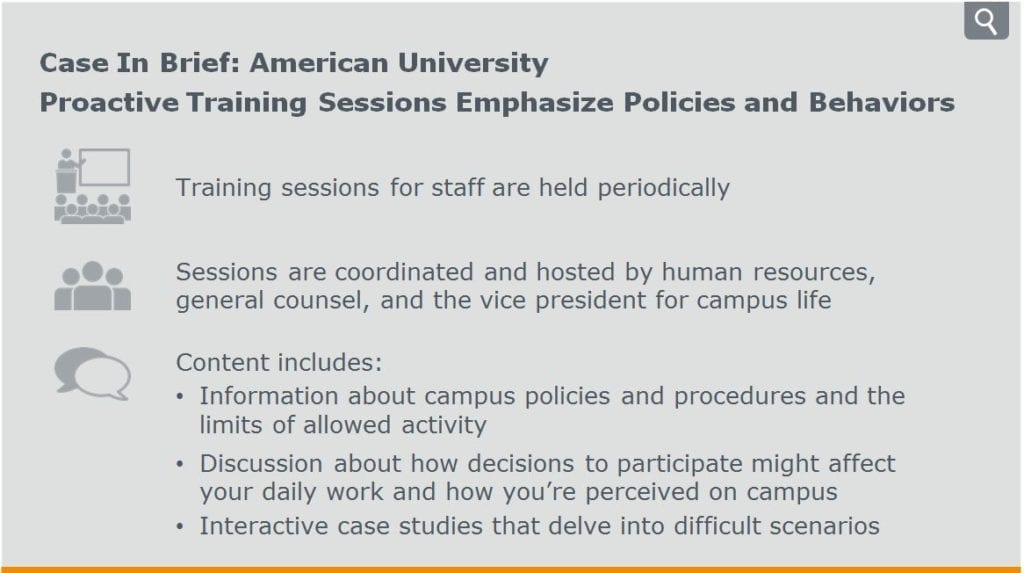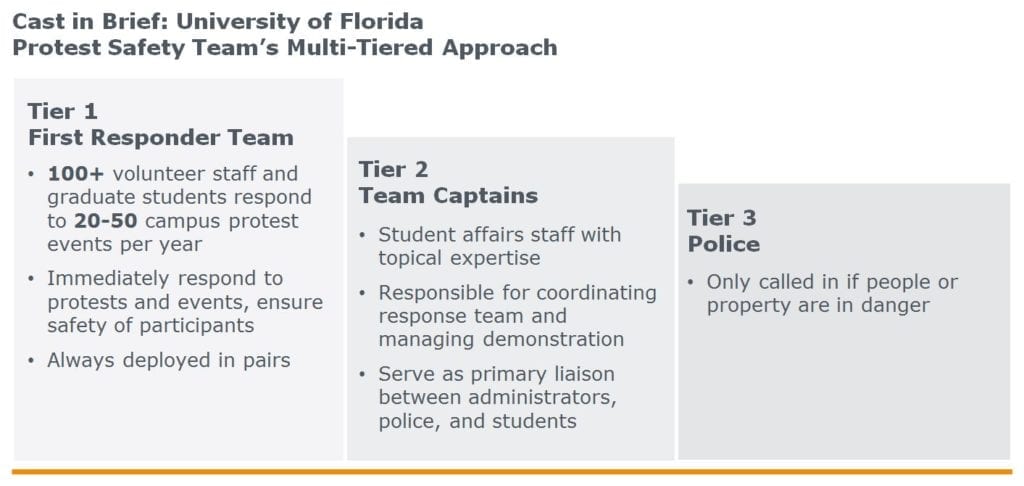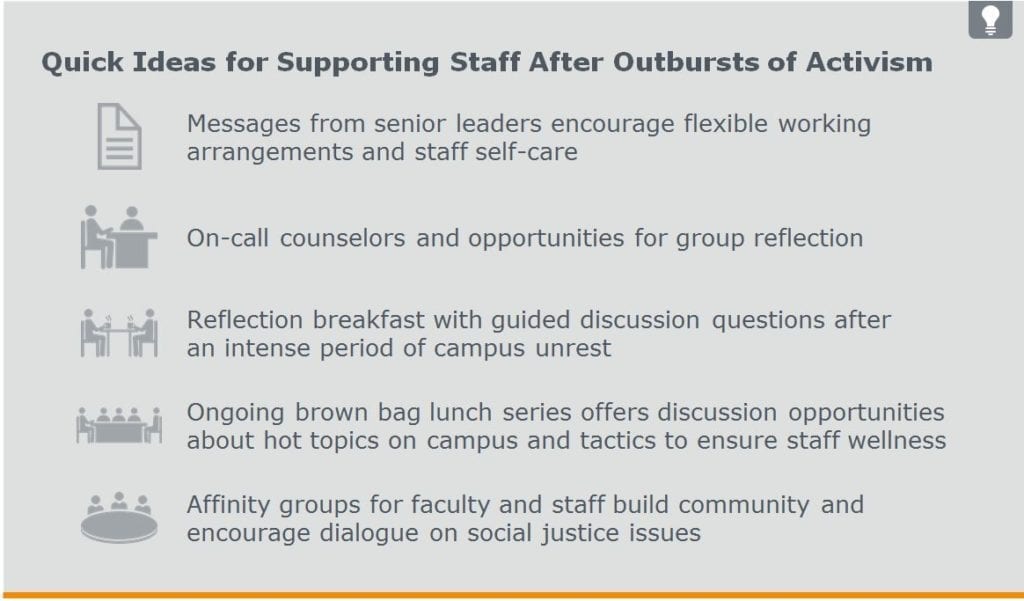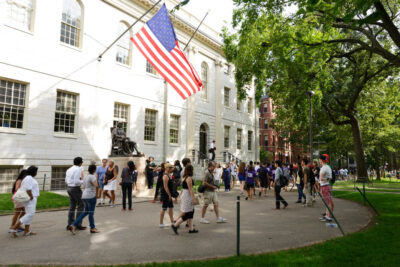Your guide to defining staff involvement with student activists
Today’s activism raises questions for all student affairs staff—everyone from new professionals to divisional leaders and beyond—about their role in preparing for and managing campus activism. The causes that today’s students care most about are often causes that are important for many student affairs staff members, which can cause both personal and professional tensions for some employees.
Some institutions have proactively implemented a specific policy or protocol for staff to abide by when interacting with or responding to activists on campus, while other institutions have less formal expectations for staff. The content of these policies and expectations heavily depends on many institution-specific factors, such as state regulations, institution type (public vs. private), and an institution’s mission and values.
No matter your campus context, EAB recommends that institutions define staff involvement with student activists at three critical steps: before, during, and after an outburst of activism. Use the below discussion questions and case examples to jumpstart conversations on your campus.
Preparing student affairs staff before an outburst of activism
As the volume of activism continues to rise on campuses, staff members are grappling with questions about how to balance their role in supporting students, representing the institution, and managing activism. In response, some institutions are expanding the proactive guidance and training that they provide to staff.

Discussion questions
- What are the expectations of staff as to how they will interact with and support potential student activists?
- How does staff know what the institution requires or expects of them in their role? Is the staff currently aware?
- How can staff promote content and opinion neutrality when working with students from diverse backgrounds or with diverse viewpoints?
Managing student affairs staff during an outburst of activism
An institution’s first response to campus activism is critical, but often underestimated. It sets the tone for the remainder of the institution’s interactions with student activists, ensures student safety, minimizes disruption, and will likely be widely magnified and dissected. Student affairs staff is well suited to lead the institution’s first response to student activists because of their professional skillset and experience working closely with students, but they need specific guidance of their role.

Discussion questions
- Who are the staff members that will respond to outbursts of activism? Are they trained?
- What is the role of staff who responds? When and how should they intervene?
- If the staff members are not “on the clock,” what are the expectations for how they should interact with activists or participate in activism on or off campus?
Supporting student affairs staff after an outburst of activism
Institutions are increasingly providing follow-up guidance and support to staff. After an outburst of activism on campus, staff needs to debrief their experiences with colleagues and consider how they will work with student activists moving forward. Activism can also be professionally exhausting and emotionally draining for staff, which has led many institutions to provide more robust support options for staff.

Discussion questions
- How will staff debrief their knowledge and experiences with campus activists?
- How can staff continue to be involved with students after an outburst of activism?
- What resources can staff access after an outburst of activism?
More Resources

Student Experience and Well-being Resource Center

Addressing Free Speech and Student Activism on Campus
